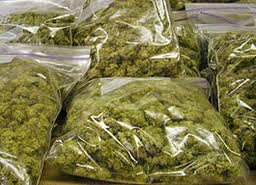 While the ruling was highly anticipated, it came as no surprise that The Court of Appeals unanimously held that the smell of marijuana during a traffic stop justifies an officer’s search of a vehicle. The decision handed down at the end of last week didn’t change anything, as law enforcement never stopped using the smell of pot to justify their searches. Rather the opinion will serve to temporarily put the issue to bed for at least a few years until it is rendered obsolete after marijuana is eventually legalized.
While the ruling was highly anticipated, it came as no surprise that The Court of Appeals unanimously held that the smell of marijuana during a traffic stop justifies an officer’s search of a vehicle. The decision handed down at the end of last week didn’t change anything, as law enforcement never stopped using the smell of pot to justify their searches. Rather the opinion will serve to temporarily put the issue to bed for at least a few years until it is rendered obsolete after marijuana is eventually legalized.
The Court of Appeals opinion handed down last Friday was actually a combined ruling for three separate cases and spelled bad news for the defendants that had been anxiously awaiting closure. Two of the cases originated in Baltimore City, and the other began in Cambridge at the Dorchester County Circuit Court. In all three cases the defendants filed motions to suppress evidence including marijuana, cocaine, oxycodone and drug paraphernalia, which was recovered after police officers conducted an automobile search. The justification for the searches was police officers allegedly smelling marijuana. All the defendants argued that at the time officers initiated the searches they did not have reasonable articulable suspicion to believe that the cars contained more than 10 grams of marijuana. Possession of less than 10 grams of marijuana was and still is only punishable by a civil fine, and therefore according to the defendants could not justify a search under the automobile exception to the Fourth Amendment.
The circuit court judges were not persuaded by the defendant’s positions, and sided with the state’s attorneys who argued that despite being only punishable by a civil fine, small amounts of marijuana remained contraband. They argued that decriminalization and legalization are not synonymous, and therefore the presence of any illegal substance justifies a broader search. All three cases traveled to the Court of Special Appeals, which is Maryland’s intermediate appellate court. This court denied the appeals in unpublished opinions and then state’s highest court accepted the cases on writs of certiorari. Arguments took place back in December, and it did not take long for the Court of Appeals to hand down the disappointing but legally sound opinion.
 Criminal Defense Lawyer Blog
Criminal Defense Lawyer Blog








